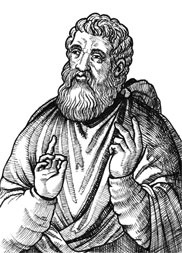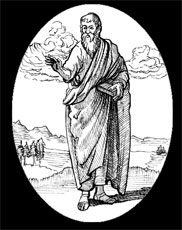Many Sources
Next Part “Christianity”—Or the Bible?
Back to The Trinity
Back to By David C. Pack
Secular history also shows how false leaders changed the direction of the Church and cast out the few brethren who remained loyal to the apostles’ original teachings.
About A.D. 135, the Jerusalem-Pella congregation came under the control of an Italian “Christian” by the name of Marcus. He persuaded the majority of the congregation to renounce the Ten Commandments, and only those brethren who did this were permitted admittance into Jerusalem by the Roman authorities.
But there were a faithful few who refused to follow Marcus. Notice: “The crimes of heresy and schism were imputed to the obscure remnant of the Nazarenes which refused to accompany their Latin bishop…In a few years after the return of the church of Jerusalem, it became a matter of doubt and controversy whether a man who sincerely acknowledged Jesus as the Messiah, but who still continued to observe the law of Moses, could possibly hope for salvation…[the followers of Marcus] excluded their Judaizing brethren from the hope of salvation…[and from] the common offices of friendship, hospitality, and social life” (The Decline and Fall, Gibbon, ch. 15, p. 149).
The remnant of the apostolic Church—those who were determined to adhere to the teachings of Jesus Christ and the apostles—were accused of “Judaizing.” This derogatory term implied that such a person sought to earn salvation by obeying God’s commandments and keeping His annual Sabbaths.
Prominent theologians, such as Justin Martyr (A.D. 100-167), could not reconcile Christ’s words in Matthew 19:17—“…if you will enter into life, keep the commandments”—with the widespread belief that no works of any kind were required for salvation. Justin Martyr from the beginning embraced another gospel (Gal. 1:6-7), and condemned as heretical everything observed by the Jews.
The church that emerged in the early second century was dramatically different from the original first-century Church. This transformation was succinctly described by Church historian Mosheim: “Christian churches had scarcely been organized when men rose up, who not being contented with the simplicity and purity of that religion which the Apostles taught, attempted innovations, and fashioned religion according to their own liking” (Ecclesiastical History, Vol. 1).
Yet that apostasy, which was part of an orchestrated movement, was called “orthodox”—while the small, remnant apostolic Church was suppressed, persecuted and forced into hiding.
Robert Robinson, author of The History of Baptism, stated, “Toward the latter end of the second century, most of the churches assumed a new form, the first simplicity disappeared; and insensibly, as the old disciples retired to their graves, their children, along with new converts, both Jews and Gentiles, came forward and new-modeled the cause” (Eccl. Research, ch. 6, p. 51, 1792).
During the second century, the apostle Polycarp, who had been trained by John, had to confront this apostate movement: “The steady progress of the heretical movement in spite of all opposition was a cause of deep sorrow to Polycarp, so that in the last years of his life the words were constantly on his lips, ‘Oh good God, to what times hast thou spared me, that I must suffer such things!’” (Encyclopedia Britannica, 11th ed., vol. 22, p. 22).
Both Polycarp and his successor, Polycrates, witnessed the wholesale departure of organized Christianity from observing Passover on the 14th of the first month of the sacred calendar, to the observance of Easter, a pagan holiday. The few who held to the original teachings were called Quartodecimani. This faithful minority in Asia Minor, along with the Nazarenes of Syria, were the last holdouts of true Christianity in the eastern Mediterranean area of the Roman Empire (Ibid., vol. 8, pp. 828-829).
Edward Gibbon sheds more light on this apostasy and its opposition to the original apostolic teachings. All of the apostates were steeped in the accepted philosophies of that time—Gnosticism in particular: “The Mosaic account of the creation and the fall of man was treated with profane derision by the Gnostics…The God of Israel was impiously represented by the Gnostics as being liable to passion and to error…” Gibbon explains the Gnostics’ techniques: “Acknowledging that the literal sense is repugnant to every principle of faith as well as reason, they deem themselves secure and invulnerable behind the ample veil of allegory, which they carefully spread over every tender part of the Mosaic dispensation.”
He continued, “The Gnostics were distinguished as the most polite, the most learned, and the most wealthy of the Christian name; and that general appellation, which expressed a superiority of knowledge… assumed by their own pride…The Gnostics blended with the faith of Christ many sublime but obscure tenets, which they derived from oriental philosophy…” (Decline and Fall, ch. 15, pp. 150-151). We will examine Gnosticism in greater detail later in this chapter.
While the visible church steadily gained pre-eminence, and as persecution increased, remnants of the true Church went underground. As a result, the “Christianity” of the second, third and fourth centuries had very little in common with the practices and beliefs of the first century Christians.
The new converts of this “religion in transition” dismissed biblical authority, replacing it with what came to be viewed as “Orthodox” doctrine. They considered Greek philosophy and Gnosticism to be more palatable, more to their liking.



